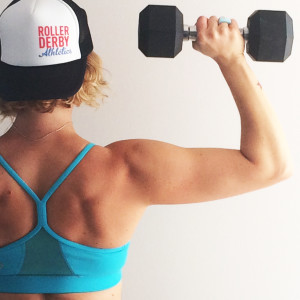
Q. There are a few girls on my team, myself included, who are prone to shoulder injuries/issues. Do you have any shoulder prehab recommendations?
– Eenie Meanie, Savannah Derby Devils
A. You’re not alone! With the increased amount of bracing we are all doing in our blocking walls nowadays, we are using our upper body strength in different ways than we used to. Unfortunately, most derby skaters aren’t really paying attention to their upper body strength and stability yet, so these injuries seem to be cropping up more often!
To begin thinking about shoulder pre-hab, we should have an idea of the most common shoulder injuries in Derby. Derbylife.com has a good overview here. To their list of the most common injuries (A/C separations, dislocations, and rotator cuff injuries), I would add the more specific rotator cuff scenario of a labral tear, or “SLAP” injury – damage to the ring of firm tissue that holds your arm bone in the shoulder socket.
Separations and dislocations tend to happen (at least the first time) with a forceful impact, whereas the rotator cuff injuries are often more of a ‘wear and tear’ scenario. Obviously there are exceptions to that generalization!
If you or a teammate has had an acute shoulder injury in the past, then you should be working with a physiotherapist on a regular routine of stabilisation exercises that are appropriate to your injury, which will help to avoid recurring dislocations.
As for the wear and tear injuries, there ARE some things we can do, on and off the track, to avoid these pesky suckers!
In our skates
Many teams are bracing hand-to-hand these days, and this can be a weak position for the shoulder joint. Furthermore, when skaters choose to internally rotate their arms in the shoulder joint, pointing fingers toward one another, this puts the shoulder into a particularly unhappy, unstable place. Here’s a great example from Minnesota in 2014, and the skater on the right is demonstrating a slightly inward rotation as well:
A safer position for the shoulder structure would be to keep the fingers pointing upward, and brace with your buddies in the hand-to-shoulder position instead whenever possible. The Terminal City skaters are demonstrating this nicely here: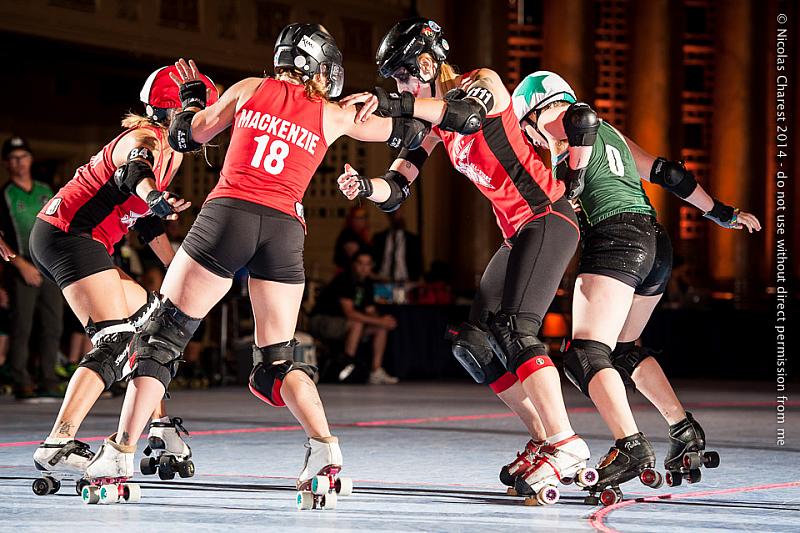
Photos courtesy of Nic Charest and my favourite skate shop, www.rollergirl.ca!
You can also tell intuitively that the hand-to-shoulder brace is stronger, as it results in a shorter lever arm, thereby reducing the force on the fulcrum (shoulder joint). The overlapping arms stabilize each other too, which is kind of like choosing to use a log instead of a 2×4 to cross over a rushing river.
In our shoes
There are a lot of small muscles surrounding the shoulder joint and serving to move your arm around nearly 360 degrees in its ball-and-socket joint. The movement we are seeing the injuries arise from most often is this pushing / bracing movement, and this is how we’re spending a lot of our time on skates. Therefore, to counteract all that pushing, we should focus our off-skates prehab on pulling instead.
Here is a short list of pulling exercises:
Seated rows / cable rows at chest height / face pulls (I like this instruction on face pulls – please watch!)
Vertical rows
Pull-ups / chin-ups
Bent over dumbbell rows
Bent over reverse dumbbell flys
All of the above except the pull-ups would use cable machines or dumbbells at the gym. However, you can also do these at home with exercise bands or tubing! If you’re just starting out with weight training, start with lighter weights and sets of 12 to 15 reps. You can always increase the weight next time if it feels too easy, but there’s no sense in overdoing it at the start!
If you already have shoulder pain, then please, please, pretty-please see a physiotherapist first and get her recommendation of which exercises are right for YOU, and which ones might do more harm.
We spend a lot of time hunched forward at our computers, and we also tend to round our backs and press our shoulders forward when we’re bracing in a wall. So, one important move to counteract this tendency is to stretch our pectoral muscles. Pecs are strong muscles that contribute to that caved-in, rolled forward posture. I am partial to the doorway stretch:
Stand in a door frame and make like a cactus: elbows at shoulder height, forearms vertical and pressing into the face of the frame. Move your chest forward (as though you’re about to walk through the door) and feel your chest open up. Hold for 30s or more, and repeat a few times a day. You can also do this one arm at a time, against a wall.
** Want to improve your upper body strength? Join our June “Sun’s Out, Guns Out” Challenge to work on your push-ups or pull-ups with me and other derby skaters from around the world! Click here for details and to register.**
If you would like to have YOUR burning question answered by Booty Quake, submit your question right here:

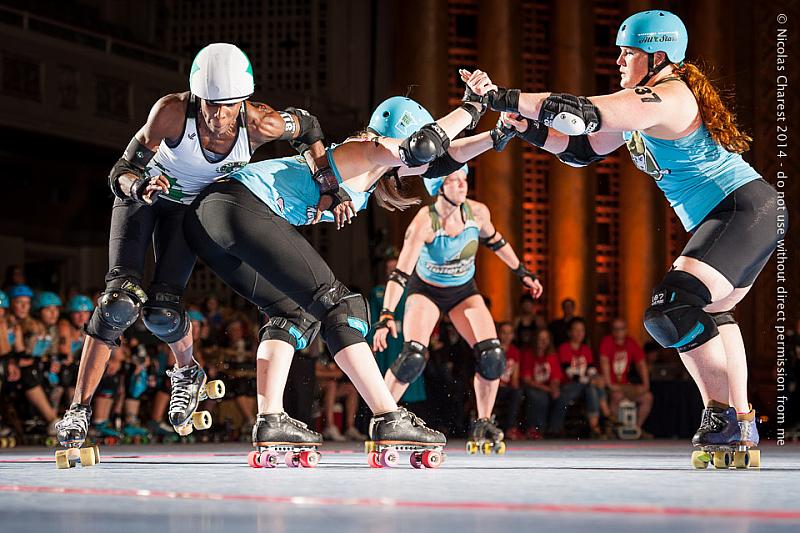
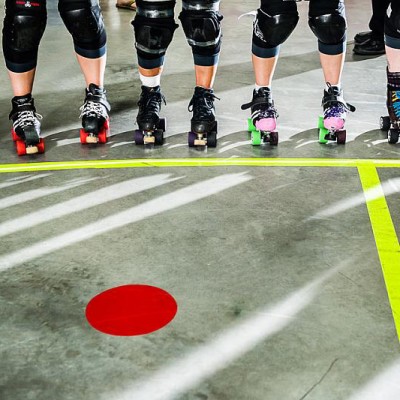 Fresh Meat – You Got This!
Fresh Meat – You Got This! 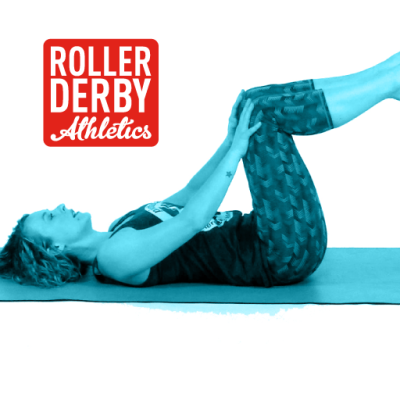 Pre-Hab: How to Engage Your Core
Pre-Hab: How to Engage Your Core 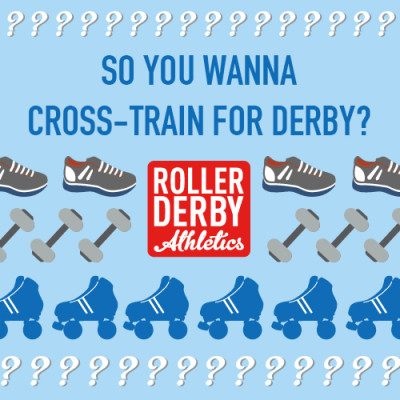 Cross-Training for Roller Derby: A Primer
Cross-Training for Roller Derby: A Primer 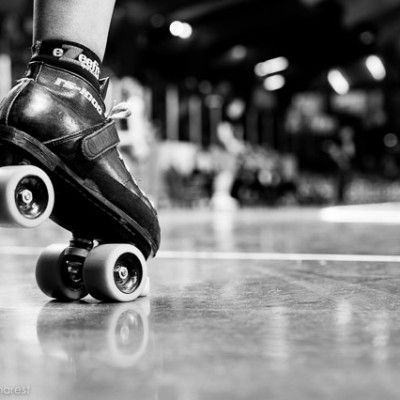 Go From Benchwarmer to MVP with the 1% Secret
Go From Benchwarmer to MVP with the 1% Secret 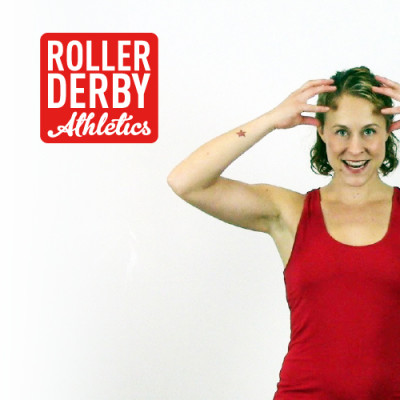 PreHab: How to Reduce Concussions
PreHab: How to Reduce Concussions